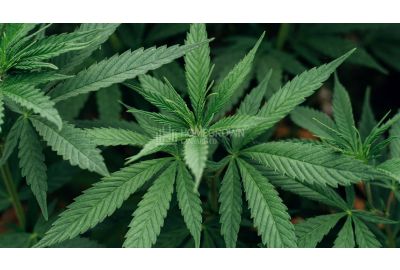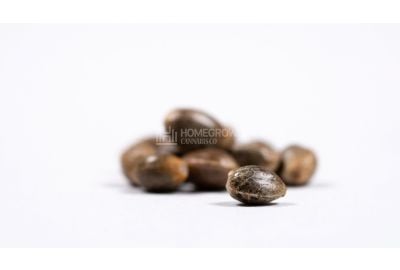The 7 Weed Plant Stages Breakdown
Like all living things, marijuana plants have a life cycle, and they pass through seven phases, ending with the all-important harvest. During these weed plant stages, a kaleidoscope of things happens behind the scenes.
The nutritional and environmental requirements of your marijuana change as your plant does. It's your responsibility to anticipate these transformations and act upon them to give your plants what they need to grow and avoid illness.
Don't feel overwhelmed by the role you need to play during the cannabis life cycle. We're here to guide you through the stages of growing weed so that you're fully prepared as soon as your cannabis seeds arrive. Read on to gain the knowledge to become a successful home cultivator.

What are the 7 weed plant stages?
The cannabis grow cycle is made up of seven key phases. Below, we've detailed each one from seed to harvest.
Sadly, cannabis is monocarpic, meaning that once the stages of a marijuana plant run their course, it dies. The cycle comes to an end, and you'll need to plant fresh seeds for a new crop.
Let's take a closer look at the weed plant stages to understand what happens in each and how we can exploit these natural processes to achieve optimal yields.
Stage 1: Seed
Obtaining a marijuana seed is the first step on the journey to cultivating cannabis and the first part of the weed growth cycle.
A miniature plant with a stem, root, and two tiny leaves lays dormant inside the husk, waiting for the right environmental conditions to enter the world.
How does it stay alive, you ask? The embryo receives food during this hibernation phase from the endosperm, and that's why seeds have a shelf life.
A weed seed is at its optimal viability for up to a year. Beyond this, all nourishment is gone, making successful germination less likely in most cases.
You can keep your seeds fresh by storing them in a consistently cool, dark, and dry place—like the refrigerator.
By doing this, you help the seed preserve nutrients and stop it from accidentally sprouting. If it pops, it could start the next phase in the cannabis life cycle in less than adequate conditions.
Avoid common storage containers like jars or plastic bags as they can trap moisture, leading to mold and premature sprouting.
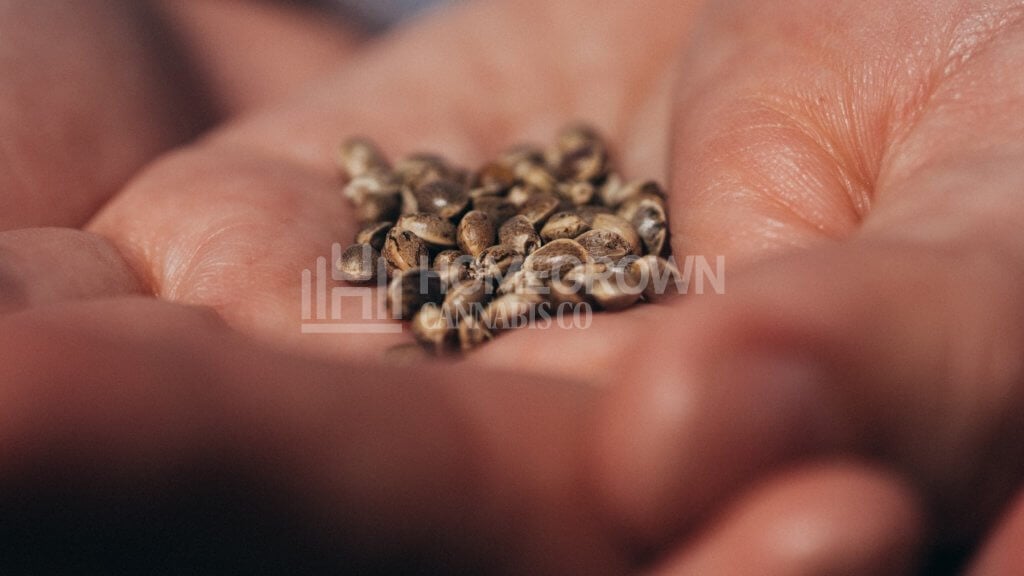
Stage 2: Germination
Germination is the next step in the cannabis grow cycle. Subjecting your seeds to specific environmental conditions triggers them to come out of hibernation, pop their husks, and channel energy into growing a taproot.
Begin the germination process with the number of seeds that can fit as fully matured plants in your grow space. Make sure you're ready to complete the entire weed growth cycle.
Don't waste your time on bad seeds. If they're green or white and feel squishy, they've most likely gone off and need tossing. A healthy viable seed is brown, dry, and hard.
There are several popular approaches to germinating seeds, but the paper towel method is the most tried, tested, and successful technique we stand by in our germination guarantee. Follow the Homegrown Cannabis Co. germination guide to get this part of the weed growth cycle successfully underway.
At this stage of the process of growing weed, you mustn't allow your seeds to dry out. Moisture activates the essential enzymes that release energy from the seed's food store for growth.
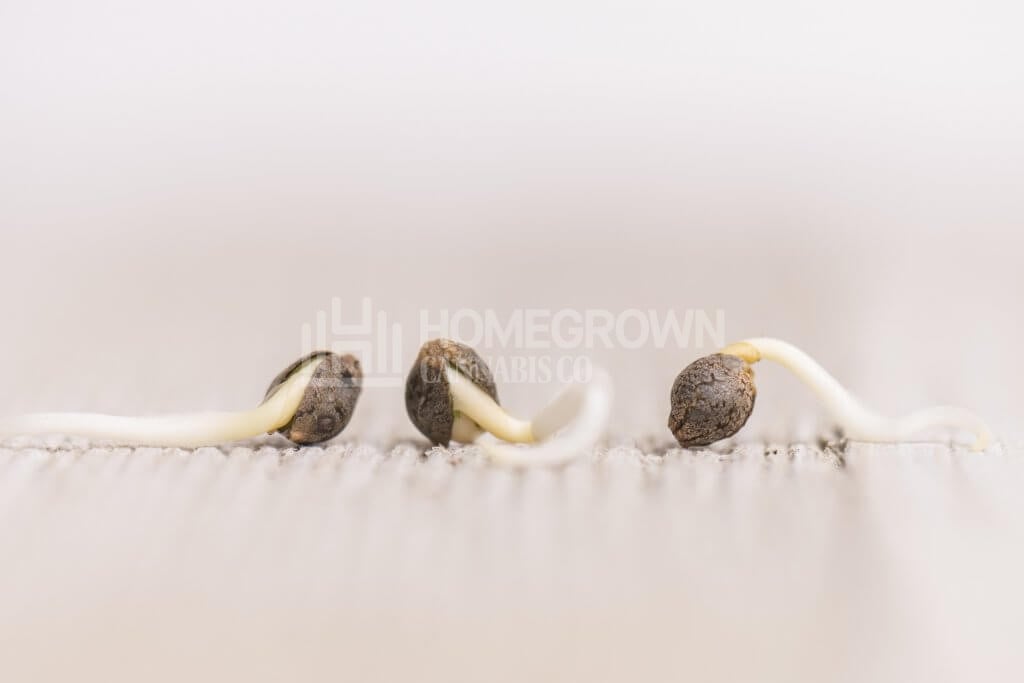
Stage 3: Seedling
Congratulations, you're progressing through the weed plant stages and now have a baby pot plant. Carefully transfer it from the plates into its first growing medium.
Two rounded leaves known as cotyledons emerge as the minuscule stem unfolds from the drying husk to stretch upwards. These leaves are responsible for harnessing energy from the plant’s first taste of sunlight.
To help the seedlings on their way into the next marijuana plant stages, keep them warm and moist. They crave temperatures between 70–85°F, with humidity between 75–85%.
To thrive, they also need a light to dark cycle of 18:6. At this phase, the leaves are very sensitive. Use CFL or LED bulbs to reduce the light and heat intensity, but make sure they’re close enough. Too far away, and your plants will stretch, becoming lanky and weak.
During the two to three weeks, your plants are in this phase of the weed plant growing stages, they’re highly susceptible to mold and disease. Keep the surrounding area clean and water them using a spray bottle to keep moisture levels from building up at the soil level.
Using this method also prevents root damage and overwatering, which can lead to root rot and other cannabis seedling problems. After growing up to eight leaves, your plants will leave the cannabis seedling stage to enter the next stages of marijuana growth.
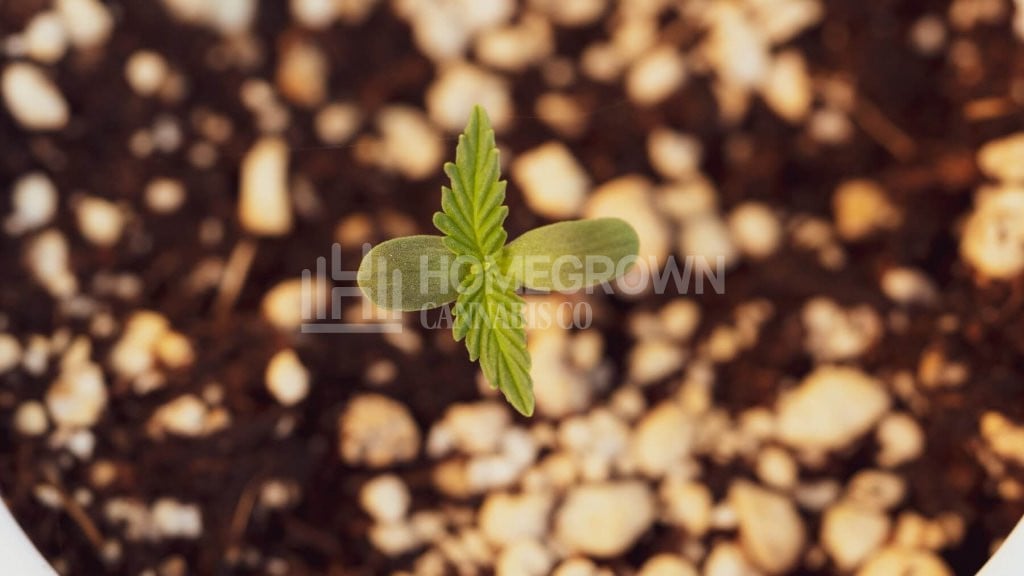
Stage 4: Vegetative
On average, the vegetative phase of the cannabis life cycle is the longest. It lasts between 3–16 weeks, depending on the strain you're cultivating. During this time, your plant will grow in the blink of an eye. Healthy marijuana can have growth spurts of around two inches per night.
To spot when your seedlings are vegging, look out for escaping roots. If they're running out of the bottom of their current pot, it's time to transplant your weed.
At this stage, you can start using training methods, and topping your weed keeps it at a manageable size. Your plant also needs a boost of nitrogen to promote thick foliage.
Indoor growers need to swap out their CFL or LED lights for metal halide (MH) lights while continuing the same light to dark cycle schedule.
At this vegetative phase of weed plant stages, keep temperatures between 70–80°F. You should aim to adjust the heat indoors to reflect the high point of the day before cooling off into the night.
To prepare your plants for the next part of the weed growth cycle, reduce humidity by 5% every week until the parameters reach 45–55%.
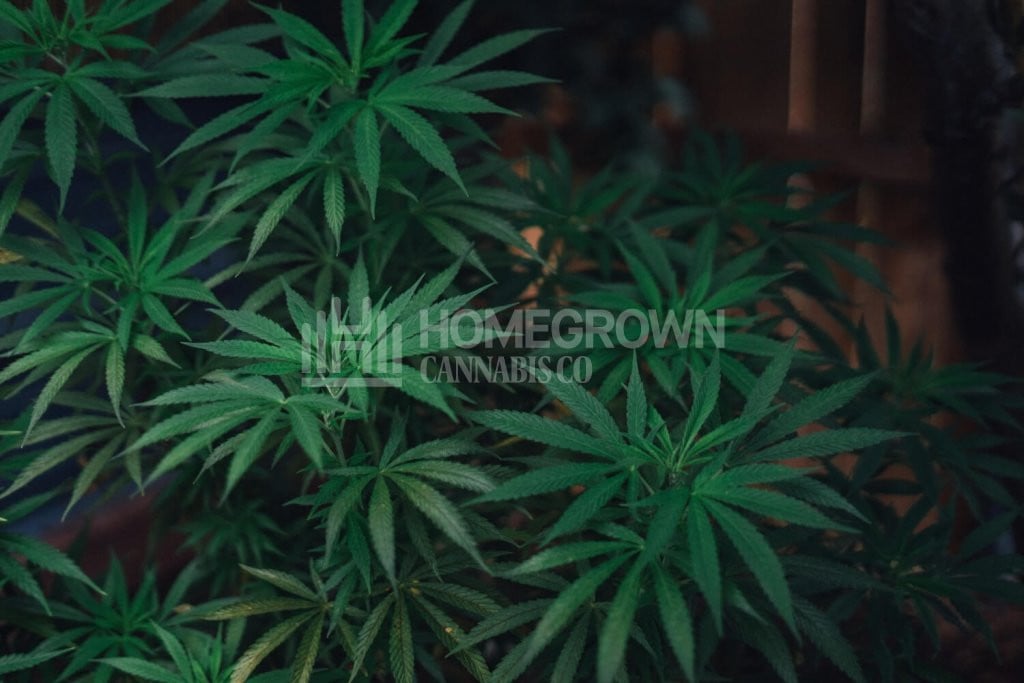
Stage 5: Pre-flowering
Pre-flowering, aka flowering initiation, isn't one of the weed plant stages—scientifically speaking. Nevertheless, we consider it a critical time in the life of a marijuana plant that you need to pay close attention to.
Depending on the specific strain, pre-flowering typically occurs around the fourth week in the vegetative stage. At this point in the process of growing weed, sex organs become visible at the nodes.
Cannabis plants gorge on potassium and phosphorus during this stage to aid the flowering process.
They can mature into three sexes:
- Female
- Male
- Hermaphrodite
The pre-flowers from a female weed plant are collectively referred to as pistils. They look like hairs called stigmas and are used for catching the males pollen. They protrude from green tear shapes named the calyx. It's these that develop into dense buds with the highest concentration of THC and CBD.
Males, in comparison, go through different weed plant stages and develop small ball shapes at the nodes. These are pollen sacs that release pollen to impregnate surrounding females. These pre-flowers don't contain any of the sought-after compounds that females do.
Males are only useful if you intend to breed. Undetected and unwanted males can spoil crops of female plants within a three-mile radius. It's paramount they’re identified and disposed of fast if seed production isn't your aim.
You need to treat hermaphrodite plants like males. Some are easy to spot with unique pistils firing out, while others have banana-shaped pollen sacs.
They can also spoil a crop of females by pollinating them. As a result, all the plants produce seeds that are hermaphrodites too. Unless you desire seeds, get them out of your grow area.

Stage 6: Flowering
Around four to five weeks later, the pre-flowering phase ends, and the mid-flowering processes begin. At this point in the weed plant stages, growth will halt to channel energy into ramping up bud development.
From week six, your plants enter the late flowering stages of cannabis growth. Trichome production goes into overdrive, making the fat buds sticky while the pistils begin to change color.
To support your plants during this busy time, you need to up their water and nutrient intake.
Stop all nutrient feeding a week or so before you anticipate harvesting and flush the plants with water with a pH level of 6.5. Doing this stops the buds from carrying any weird or harsh flavors from fertilizers.
At this milestone in the weed growth cycle, indoor growers need to change the light to dark cycle so that the weed receives 12 hours on and off. Any interruption could send your marijuana back into the vegetative phase.
Daytime heat should stay consistent at 80°F while nighttime can safely drop to 65°F. You should also reduce humidity levels in the room by 5% until you reach 35–45% to lower the risk of bud rot, mildew, and mold.
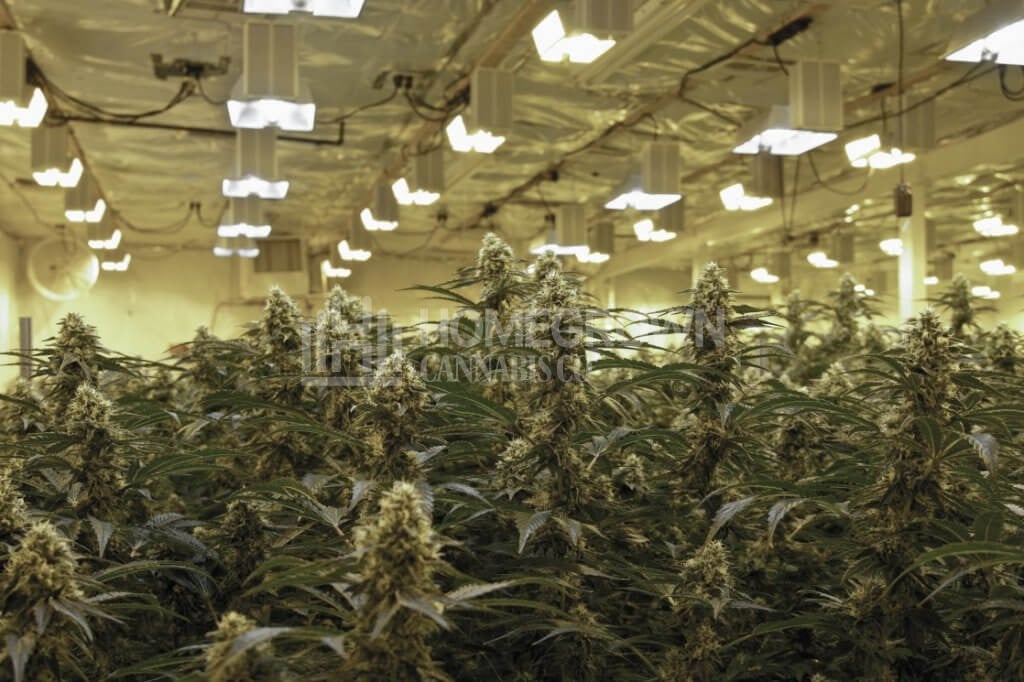
Stage 7: Harvest
The cannabis life cycle ends when flowers cease to grow and instead ripen to be dense, strong-smelling, and dripping with resin.
Pistils begin to curl and darken while the frosty trichomes covering the surface increase and change color. It's these appendages that carry the terpenes, cannabinoids, and flavonoids.
You must spend your time monitoring these changes so you're ready to harvest your weed at its full potential, known as the peak. Wait too long, and degeneration begins while the THC content rapidly drops.
Harvesting is by far the most exciting and rewarding of the marijuana plant stages. Knowing the signs of maturity is a skill in itself, and you'll need to practice patience not to ruin the potential of your weed by starting too early.
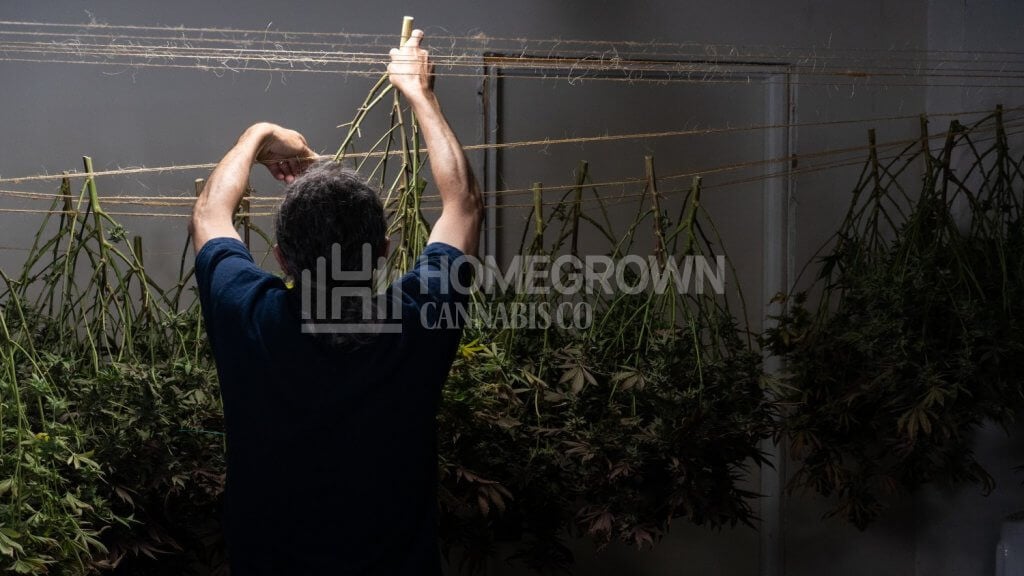
How long is the average cannabis life cycle?
How long does it take to grow cannabis? Marijuana grow cycles depend on a variety of factors, like which strain you're cultivating.
Indica lines grow faster than most sativa types of weed. The latter can take up to eight months to mature in some cases, while indica plants are often ready to harvest within 12 weeks.
Fast version flowers are ready to harvest within eight weeks, while autoflowering strains veg for only two to four weeks before they start producing buds without needing a light change.
Where you cultivate your weed also impacts how long it takes your plants to progress through the weed plant stages.
Indoor cannabis life cycle
Typically, plants grown indoors have a shorter cannabis life cycle than those grown outside.
Growing weed indoors gives you more control over the stages of marijuana. By keeping the lights on for longer, you can suspend your plants in veggie mode. When it suits you, flip your weed by reducing the light to trigger flowering.
Inside, you can maintain the perfect environmental parameters so that your weed can progress at a healthy pace through the marijuana growth stages. Those grown outside may be stunted by bad weather or inadequate sunlight.
Outdoor marijuana grow cycles
Outdoor plants follow a natural cannabis life cycle, relying solely on the weed seasons and the sun.
Timing is crucial outdoors. You must work with what mother nature gives you in each season, such as temperature and light, to achieve a prosperous harvest in the end.
Most strains grown outdoors are sewn in the spring, and harvest occurs around September or October before the weather turns cold again. Planting too late can spell disaster for your marijuana and its final yield.
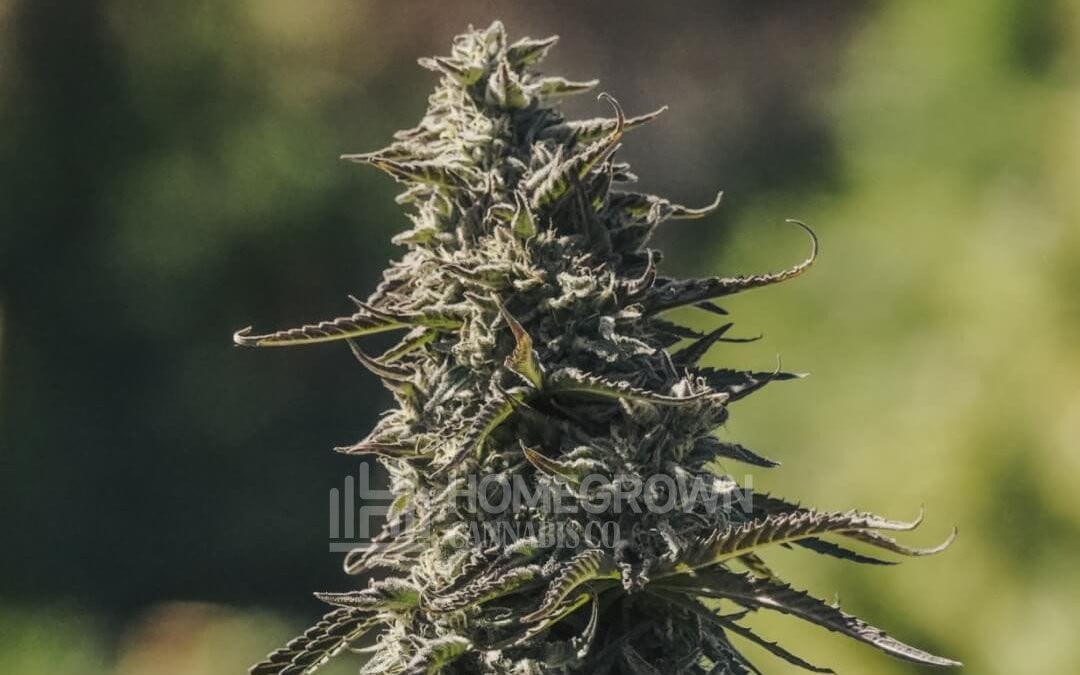
Why understanding the cannabis growth stages is key to succeed
Each of the marijuana plant stages is as important as the last. Understanding what your weed needs and when it needs it is crucial for your plants to grow healthily.
Armed with this knowledge, you can easily anticipate the next step and prepare the correct temperature, light, humidity, and nutrients for optimal growth.
Be ready for each one of the cannabis growth stages and ensure your weed receives a smooth transition between each change.
In return for all your efforts, you'll achieve a heavy crop of potent, terpene-rich, and high-quality buds.
How to overcome challenges and make the most out of each marijuana plant stage
The secret to cultivating happy weed capable of reaching its maximum yield potential is light intensity.
Supplying your plants with the right light to dark ratio throughout the stages of growing weed can be tricky, but you'll grow bigger plants with heavier colas if you get it right.
Light becomes a core marijuana need as soon as you germinate a seed. Take care not to overheat or burn your seedlings but give them sufficient amounts to turn into energy.
Too little light in the vegetative phase causes plants to stretch upwards, making the stem fragile and needing support. It’s also difficult to give them efficient light coverage during the next stages of marijuana growth, leading to less than impressive yields.
Heat is another key principle in marijuana care. If you don't cool down your grow room during the flowering stage, terpenes and cannabinoids can burn off, leaving you with low-quality buds.
At this point in the weed growth cycle, plants absorb a ton of nutrients, and deficiencies are a common issue. Seedlings and vegetative weed love a grow fertilizer with a 20:5:10 NPK ratio. Flowering marijuana craves fertilizers with a ratio of 5:30:20.
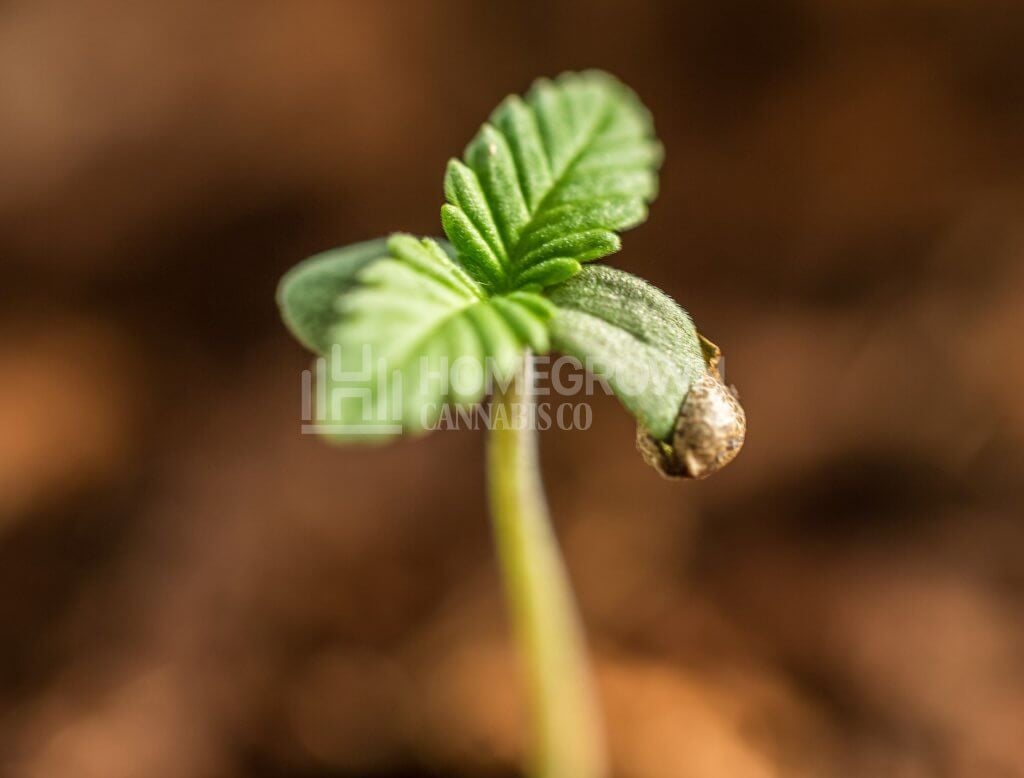
Key takeaways about the stages of cannabis growth
Growing cannabis is an adventure, and with plenty of knowledge about the weed plant stages, you'll reap the rewards season after season.
As soon as you receive your seeds from Homegrown Cannabis Co., nurture them with the right care to get the best out of your marijuana.
Remember, there are seven key weed plant stages. You need to consider each one carefully while choosing when to plant outdoors and how to adjust your parameters accordingly inside.
Use this guide to the cannabis life cycle to help you at any point along the way, and refer to the cannabis growth chart for more information to keep you on track to success.
Order your seeds today from Homegrown Cannabis Co. and feel confident growing your own beautiful buds at home from seed.
About the Author: Kyle Kushman
Kyle Kushman is a legend in the cannabis community. He is the modern-day polymath of pot: cultivator, breeder, activist, writer, and educator. After winning no less than 13 Cannabis Cups, there’s nothing this guy doesn’t know about indoor growing - he’s been there, done it, and is still doing it to this day!

